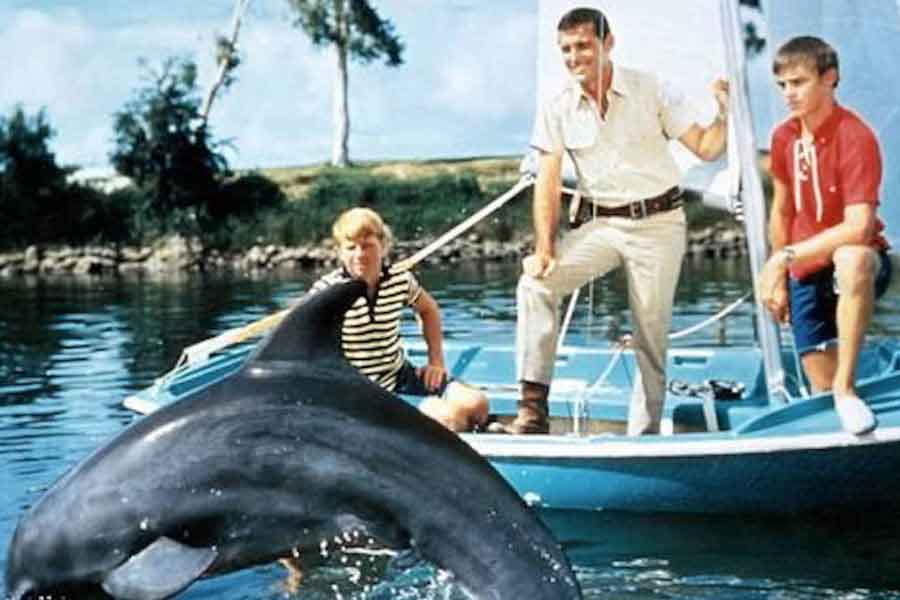
There are very few television series that have touched the audience as much as «Flipper.» Several generations grew up enjoying the amusing adventures of a free-spirited dolphin that chose to live with a father and his two children, who found themselves immersed in all sorts of mishaps. But what was hidden behind the script was much more troubling.
In reality, Flipper never existed. To play the role, five female dolphins were used because male dolphins often have teeth marks on their backs from fights to win females, and the producers wanted dolphins with flawless bodies. The dolphins never worked in the wild; the series was filmed within a fenced perimeter near the Bahamas, and the dolphins were trained through hunger. Richard O’Barry, the dolphin trainer, wrote, «After two days without eating, there is nothing a dolphin won’t do for a piece of fish.»
Even Flipper’s voice was fake. The sound heard when the animal stuck its head out of the water and shook its body was generated by Mel Blanc, who also voiced Bugs Bunny and Woody Woodpecker.
In the 1960s, when the series was a success, an untrained dolphin had a cost of $400, and everyone wanted one. Those who had the money to build a pool wanted Flipper in it. The Seaquarium in Miami, owned by the same company that produced the series, became the main exporter of female dolphins at that time. All the world’s aquariums presented the «real Flipper.» Even a European millionaire would attend parties, towing a trailer with a dolphin swimming in very little water behind his luxurious car. Even some gas stations had their own dolphin to entertain customers while they refueled.
The series caused as much harm as benefit for dolphins. The audience, enamored with Flipper, began demanding stricter laws to protect marine mammals, leading to the first prohibitions on capture. In the early 1970s, the price of a wild dolphin rose to $220,000. In the 1980s, when it was discovered that dolphins were being killed during tuna fishing, a campaign spread throughout the United States with the slogan «Would You Kill Flipper for a Tuna Sandwich?» and people massively stopped buying tuna.
Flipper has saved as many dolphin lives as it has taken, or perhaps even more. Dolphins now enjoy the affection of the public, who protect them, and more and more people refuse to see them in captivity. But Susie, Kathy, Liberty, Patty, and Sharky, the stars of Flipper, died in captivity, forgotten in a low-grade circus when the series stopped filming.
Ric O’Barry, the trainer, was arrested in 1970 on Bimini Island while attempting to free a captive dolphin. Since then, he has been leading «The Dolphin Project,» an association aimed at achieving the release of captive dolphins worldwide.
«One cannot defend what one does not love, and one cannot love what one does not know.»

